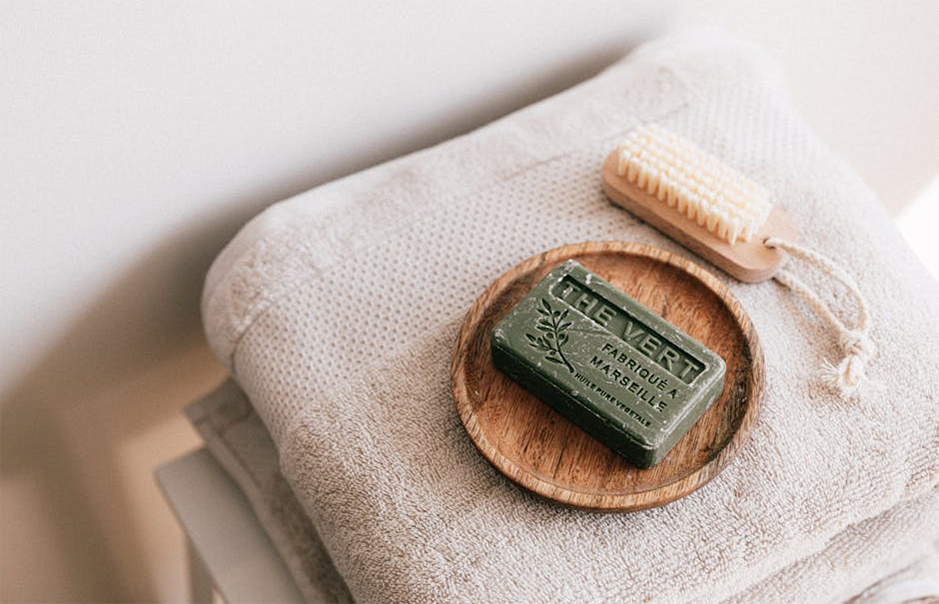Maximizing Mental and Physical Health: The Role of Wellness and Spa Technologies in Self-Care
Maximizing Mental and Physical Health: The Role of Wellness and Spa Technologies in Self-Care
Introduction to Wellness and Spa Technologies in Self-Care
In the hustle of modern life, taking a step back to focus on self-care is not just important, it's essential. When we speak about self-care, it's not only about bubble baths and face masks; it goes deeper, into the realm of wellness and spa technologies. These technologies range from simple gadgets that help with sleep to complex systems designed for spas that aim to improve mental and physical health. Think about a smartwatch that nudges you to move after hours of sitting or a spa therapy device that uses sound waves to deepen relaxation. These aren't luxuries anymore; they've become tools to help us maintain our wellbeing. Whether you're at home or visiting a spa, wellness technologies can significantly contribute to your self-care routine by providing targeted treatments to relieve stress, improve sleep, and enhance overall health. This introduction is just the tip of the iceberg. As we dive deeper, you'll see how integrating wellness and spa technologies into your life isn't just beneficial; it's a game changer.
How Wellness and Spa Advancements Contribute to Mental Health
Today's wellness and spa advancements are more than just about feeling good on the outside; they play a big part in boosting mental health too. Think about it. When you're stressed or down, a massage or a spa day can work wonders, right? That's because these treatments go beyond surface-level relief. They help decrease stress hormones like cortisol and increase feel-good chemicals like serotonin and dopamine in your brain. It's science - when your body relaxes, your mind does too. These advancements also include technology like float tanks and cryotherapy, which have been shown to improve mood, lower anxiety, and even help with sleep. So next time you're considering a spa day, remember it's not just a luxury but a valuable tool for your mental well-being.
Physical Health Benefits of Regular Spa and Wellness Treatments
Regular spa and wellness treatments aren't just about feeling good; they offer real benefits for your physical health. For starters, massages help relieve muscle tension, reduce pain, and improve circulation, making you feel more relaxed and aiding muscle recovery. Hydrotherapy sessions, often found in spas, use water pressure to stimulate blood flow and ease sore muscles. Saunas can detoxify your body by encouraging sweat, flushing out toxins, and they also help in weight management by burning calories while you relax. Mud wraps and other body treatments cleanse and exfoliate your skin, leaving it smoother and rejuvenated. Lastly, these treatments encourage better sleep patterns. By easing physical discomfort and promoting relaxation, you'll likely find it easier to fall and stay asleep. Regular visits to a spa or wellness center can be a valuable part of maintaining your physical health, keeping you active and preventing potential health issues down the line.
Innovative Spa Technologies for Enhanced Well-being
In today's fast-paced world, self-care has climbed up the priority ladder, and leading the charge are innovative spa technologies that promise not just relaxation but enhanced mental and physical well-being. Floatation tanks, for instance, offer a unique sensory deprivation experience that can significantly reduce stress levels and improve sleep quality. Then there's cryotherapy, a cool trend where exposing your body to extreme cold temperatures is believed to aid in reducing inflammation, boosting energy levels, and even enhancing mood. Don't overlook infrared saunas either; these are not your typical steam rooms but are designed to deeply penetrate your skin, promising detoxification at a cellular level, improved circulation, and relief from sore muscles. Lastly, light therapy, using specific wavelengths of light, is gaining traction for its potential in addressing seasonal depression, promoting wound healing, and even improving skin conditions. These technologies are not just about pampering; they're about offering a holistic approach to wellness that caters to both the mind and body. Getting acquainted with them could be a game-changer in your self-care routine.
Combining Traditional and Modern Wellness Practices for Optimal Health
Mixing old and new wellness tricks might be your golden ticket to top-notch health. Think about it—our ancestors weren't wrong with their natural remedies and relaxation methods. Fast forward to now, we've got gadgets and tech that track and boost health in ways old-school methods can't. It's not about picking sides. Use meditation or yoga to calm the mind, and don't shy away from a smartwatch that nudges you to move more or monitors your sleep. Spas have also levelled up; they mix traditional massages with modern tech for deeper relaxation. So, it's clear, blending the wisdom of the past with today's innovations can give you the best of both worlds in your health journey. Keep an open mind and mix things up for your body and mind's benefit.
The Role of Nutrition and Detoxification in Spa Treatments
Eating right and getting rid of toxins play a huge part in spa treatments designed to boost your health. Here's the deal: good nutrition fuels your body, giving it what it needs to feel strong and energized. When you go to a spa, they often focus on meals and juices packed with nutrients that help your body kickstart a health journey. They're all about giving you foods that do more than just fill you up—they power you up. Then there's detox. This isn't just a fancy word; it's about cleaning out the bad stuff from your body. Spas use various methods like saunas, steam rooms, and special detox diets to help your body get rid of toxins. These toxins can make you feel sluggish and can mess with your overall well-being. By flushing them out, you help your body reset, kind of like hitting the refresh button. Combining good nutrition with a solid detox plan in a spa setting isn't just relaxing; it's a powerful way to help your body heal and strengthen. So, when you're thinking about a spa day, remember it's not just about pampering—it's a step towards better mental and physical health.
Stress Reduction Techniques and Their Importance in Wellness Programs
Reducing stress isn't just about feeling better in the moment; it's crucial for your overall health. Wellness programs and spas know this and offer a variety of techniques to help. Deep breathing and meditation can calm your mind, making big problems seem more manageable. Yoga stretches out the stress in your body, helping you feel grounded and less tense. Many wellness programs also include guided imagery or visualization, where you picture a peaceful scene to relax. The importance? These techniques lower your stress hormones, boost your mood, and even improve your physical health by lowering blood pressure and improving sleep quality. Incorporating these into your routine is more than a luxury; it's a necessity for maintaining balance in today's fast-paced world.
Personalized Wellness Plans: Tailoring Spa Treatments to Individual Needs
Creating a personalized wellness plan means looking at what you specifically need for your body and mind. No two people are the same, so why should their spa treatments be? By focusing on individual needs, spas can offer more than just a one-size-fits-all solution. This strategy involves assessing your physical and emotional state first. Are you stressed and in need of relaxation? Or maybe your muscles are tight, calling for a deep tissue massage. Perhaps, your skin is dull, making a facial the way to go. After this initial assessment, the next step is setting up a plan that could include a mix of therapies—like massages, facials, and even meditation sessions. This tailored approach ensures that your time spent at the spa directly contributes to your mental and physical wellness goals. Plus, it can change as you do, adapting to your needs at different points in your life. The beauty of personalized wellness plans lies in their flexibility and focus on what truly benefits you, making every spa visit a step closer to achieving overall well-being.
The Psychological Impact of Self-Care Through Wellness and Spa Rituals
Taking time for self-care through wellness and spa rituals can have a big positive on your mind. Let's break it down. When you treat yourself to a spa day, you're not just pampering your body, you're also giving your brain a break. It cuts down on stress and boosts your mood. The science? Activities like massages and soaking in hot springs lower cortisol, the stress hormone, and increase serotonin and dopamine, your happy hormones. It's more than feeling relaxed for a few hours; these changes in your brain help fight anxiety, depression, and boost your overall mental health. Plus, the act of taking time for yourself sends a message that you value your well-being, reinforcing positive self-esteem. So, next time you're doubting if you should splurge on a spa day, remember it's not just a luxury, it's a tool to keep your mind sharp and your spirits high.
Conclusion: Integrating Wellness and Spa Technologies into Your Healthcare Routine
In wrapping up, embracing wellness and spa technologies as part of your self-care routine can significantly boost your mental and physical health. It's clear that the journey to better health isn't just about the occasional workout or eating right; it's about consistently taking care of your body and mind. From the soothing effects of a spa day to the rigorous benefits of advanced wellness technologies, integrating these practices can lead to lasting improvements in your overall well-being. Remember, it's not about splurging on luxury but investing in your health. So, consider how you can incorporate these technologies into your life. After all, taking the step to better your health is a decision you're unlikely to regret.
Toll Free
1-800-674-8260Use the form below to contact us for a quote, today.


